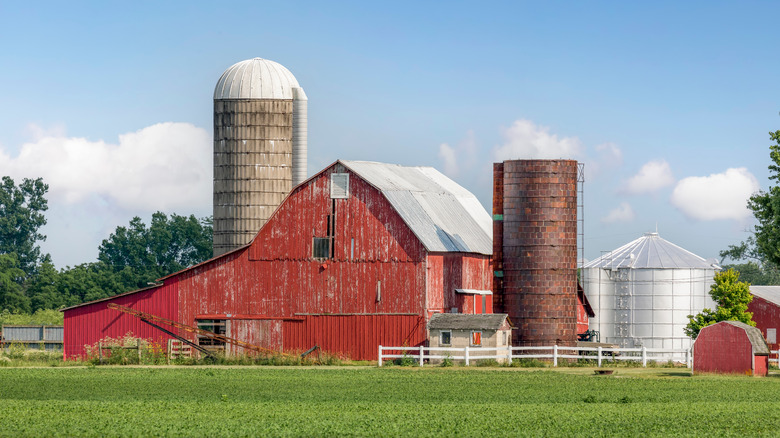The Most Affordable Region In The US Where The American Dream Is Still Alive
What is the American Dream? Everyone has their own idea of the American Dream, but by definition, it's "the ideal that every citizen of the United States should have an equal opportunity to achieve success and prosperity through hard work, determination, and initiative," according to Bush Center. Essentially, it's the belief that anyone can create their own success with determination and hard work; however, as the years progressed, the American Dream moved further and further away from becoming a reality. Out of 14,000 Americans, 37% agree the American Dream is much more difficult to obtain than it was in years past, Minutehack states.
There are several factors that contribute to this belief, including crippling college debt, an ever-increasing cost of living, and a highly-saturated job market, where most Americans need to work multiple jobs just to get by, says Fast Company. In many areas of the country, housing prices are going up while wages are staying the same, making it nearly impossible to get ahead. In fact, according to MarketWatch, only one in five Americans has money in their savings account, so it's no wonder people doubt the possibility they can achieve the American Dream. That being said, there is still a region in the U.S. where Americans can make their dream a reality.
The Midwest
Despite the reputation the Midwest gets for being "lifeless and flat," this region of the country is the most economically efficient, says Clever. In the West, the job-to-income ratio is a shocking 4.2, whereas the Midwest offers a 2.9 ratio. As housing prices increased, so did the median household income, meaning Midwesterners have a greater shot at attaining the American Dream (or, as some people are calling it, "financial independence"). So, what makes the Midwest such an affordable place to live? When it comes down to it, the reason living in the Midwest is so cheap is because of supply and demand, ToughNickel says.
Big cities are saturated with people but don't have enough housing available to accommodate all of them. This drives the housing prices (and the cost of living) up, which is why you'll notice a drastic comparison between costs of goods in San Francisco versus Cleveland, for example. The demand for property, fuel, and food is much less in the Midwest, so there's no need to create a competitive market by increasing costs. Combine all of that together, and you get a region in the U.S. that grants its citizens more financial freedom, who are free to live out the American Dream.

